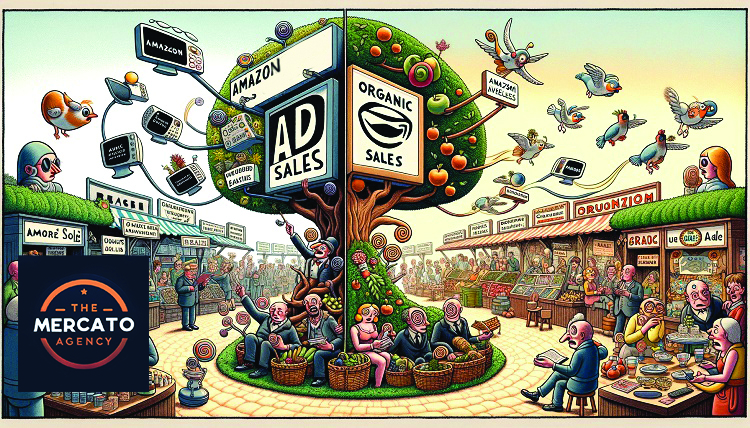Unlock the Secrets to Global Growth: Expanding Your Brand Internationally on Amazon!
Expanding your brand internationally on Amazon offers an unparalleled opportunity to scale your business. With Amazon operating in 20 different marketplaces and reaching over 300 million active customers worldwide, expanding internationally can unlock significant growth for your brand. However, it’s not as simple as listing your products in another country. To succeed in international expansion, you need to understand the intricacies of each Amazon marketplace, local consumer behavior, logistics, and compliance requirements.
In this article, we’ll explore the key steps and strategies for successfully expanding your brand internationally on Amazon, so you can grow your global footprint and avoid common pitfalls.
Why Expand Internationally on Amazon?
Access to a Global Customer Base
Expanding internationally allows you to tap into new markets and reach millions of additional customers. Whether you’re expanding into Europe, North America, or Asia, Amazon provides the infrastructure and reach to help you gain international exposure without building new infrastructure from scratch.Diversifying Revenue Streams
By selling in multiple countries, you diversify your revenue streams and reduce reliance on any single market. This diversification can make your brand more resilient to economic downturns, seasonal trends, or local competition in your primary market.Capitalizing on Global Demand
Your products may resonate with customers in international markets in ways that they don’t domestically. For example, the European market might have different consumer preferences, opening up untapped opportunities for certain product categories. Expanding internationally allows you to capitalize on that global demand and grow your sales.
Step 1: Choose the Right International Markets
Before diving into global expansion, it’s crucial to conduct thorough market research to determine which international markets offer the best potential for your brand. Not all marketplaces will be the right fit, and each has unique consumer preferences, competition levels, and logistical challenges.
Assess Product Demand
Use Amazon’s own tools like Global Selling and third-party platforms like Helium 10 or Jungle Scout to gauge demand for your product in international markets. Look at search volumes, sales data, and the competition to see where your product might have the best chance of success.Understand Local Consumer Preferences
What sells well in the U.S. might not be as successful in the UK or Japan. Study local consumer preferences, cultural trends, and purchasing behaviors to adapt your product listings and marketing strategies accordingly. For example, certain colors, designs, or product attributes may be more appealing in one country than another.Evaluate Market Competition
Analyze the competitive landscape in each market. Entering a market dominated by big brands or saturated with similar products may not be worth the effort. Look for niches or emerging markets where your brand can stand out.
Step 2: Optimize Product Listings for International Markets
When expanding your brand internationally on Amazon, simply copying your existing product listings won’t be enough. Each marketplace has unique requirements for listing optimization, language, and SEO.
Localize Product Listings
Localization goes beyond just translating your product descriptions. Ensure your product listings are optimized for the language, culture, and search habits of each market. For instance, listings in the UK require different spelling conventions, measurement units, and sometimes even completely different keyword strategies than the U.S. Amazon marketplace.Adapt Pricing Strategies
Pricing is key when expanding internationally. Consider local currency, taxes, and competition when setting your prices. Some markets may have higher willingness to pay, while others may require more competitive pricing to break in.Comply with Local Regulations
Different countries have different rules about product labels, certifications, and advertising claims. Ensure your product meets the legal requirements of the country you’re entering, including any necessary certifications (e.g., CE marking for Europe).
Step 3: Navigate Fulfillment and Logistics
One of the biggest challenges when expanding internationally is managing fulfillment and logistics. Fortunately, Amazon offers Fulfillment by Amazon (FBA), which can handle much of the logistical complexity for you.
Use FBA for International Markets
Amazon FBA can store your inventory in their local fulfillment centers, manage shipping to customers, and even handle returns. FBA also gives you access to Prime, which can significantly increase your sales potential. However, be mindful of the added costs, such as international shipping and storage fees.Plan for International Shipping and Customs
Shipping internationally involves customs, tariffs, and taxes that can impact both your costs and your delivery times. Be sure to research the import requirements for each market, and factor those costs into your pricing strategy.Monitor Inventory Across Markets
Managing inventory across multiple international markets can be tricky. Leverage Amazon’s Multi-Channel Fulfillment (MCF) to consolidate inventory and streamline operations. Tools like RestockPro can help automate the process of tracking inventory levels and reordering products.
Step 4: Leverage Amazon’s Advertising and Marketing Tools
Just as in your home market, advertising is essential to get your products noticed in international markets. Fortunately, Amazon’s advertising platform is available across multiple marketplaces, making it easier to promote your products globally.
Run International Amazon PPC Campaigns
Use Sponsored Products, Sponsored Brands, and Sponsored Display ads to promote your listings in international markets. Make sure your campaigns are tailored to the target audience with relevant keywords and localized ad copy.Utilize Amazon’s Global Selling Tools
Amazon offers a suite of tools specifically designed to help sellers expand internationally. These tools can help with listing translation, marketplace management, and cross-border logistics. Be sure to explore Amazon’s Global Selling Dashboard for insights into your international performance.
Step 5: Monitor and Optimize Performance
Expanding your brand internationally on Amazon is an ongoing process that requires constant monitoring and optimization.
Track Key Metrics
Use Amazon’s analytics tools to track sales, traffic, and conversion rates in each market. Pay attention to differences in consumer behavior across markets, and adjust your strategies accordingly.Refine Your Approach
Don’t be afraid to experiment with pricing, promotions, and advertising strategies. What works in one country may not work in another, so it’s essential to stay agile and responsive to market conditions.
The Mercato Agency: Your Partner for International Amazon Expansion
Expanding your brand internationally on Amazon can be complex, but you don’t have to do it alone. At The Mercato Agency, we specialize in helping brands navigate the challenges of global expansion. From market research and listing optimization to logistics and advertising, our team of experts can guide you through each step of the process, ensuring your brand thrives in international markets.
Ready to take your brand global? Contact The Mercato Agency today for a personalized strategy to expand your business on Amazon worldwide.
Useful Links:






